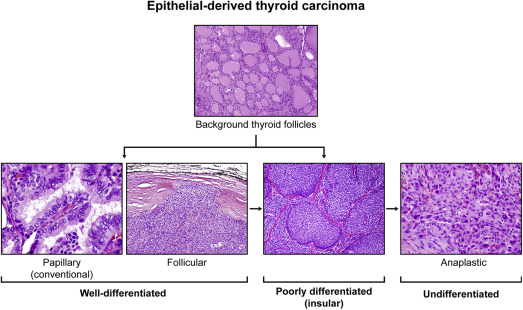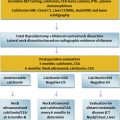Surgery remains the most important effective treatment for differentiated (DTC) and medullary thyroid cancer (MTC). Radioactive iodine (RAI) is another important treatment but is reserved only for DTC whose disease captures RAI. Once patients fail primary therapy, observation is often recommended, as most DTC and MTC patients will have indolent disease. However, in a fraction of patients, systemic therapy must be considered. In recent decades 4 systemic therapies have been approved by the United States FDA for DTC and MTC. Sorafenib and lenvatinib are approved for DTC and vandetanib and cabozantinib for MTC. Anaplastic thyroid cancer (ATC) is a rare and rapidly progressive form of thyroid cancer with a very high mortality rate. Treatment of ATC remains a challenge. Most patients are not surgical candidates at diagnosis due to advanced disease. External beam radiation and radiosensitizing radiation are the mainstay of therapy at this time. However, exciting new drugs and approaches to therapy are on the horizon but it will take a concerted, worldwide effort to complete clinical trials in order to find effective therapies that will improve the overall survival for this devastating disease.
Key points
- •
Surgery remains the treatment of choice for differentiated thyroid cancer (DTC) and medullary thyroid cancer (MTC), with tyrosine kinase inhibitors reserved for symptomatic or rapidly progressive disease not amenable to surgery or other targeted therapies.
- •
Four multikinase inhibitors are US Food and Drug Administration approved for thyroid cancer: sorafenib and lenvatinib for DTC and vandetanib and cabozantinib for MTC.
- •
Anaplastic thyroid cancer (ATC) is a rare, highly aggressive, and lethal malignancy with median survival of less than 6 months. Initial evaluation and management require a rapid, coordinated, multidisciplinary team approach.
- •
Effective systemic therapies for ATC are lacking. Future improvement in outcomes will require the identification of driver genetic abnormalities or other aberrancies in the tumor microenvironment that can be targeted with novel agents.
Introduction
Thyroid cancer is the most common endocrine malignancy. Despite an increase in incidence in thyroid cancer, death rates have not changed significantly. There are 3 major types of thyroid cancers:
- •
Differentiated thyroid cancer (DTC) accounts for more than 90% of all thyroid cancer cases. DTC is derived from epithelial thyroid cells and includes papillary thyroid cancer (PTC), follicular thyroid cancer, Hürthle cell and poorly differentiated thyroid cancer (PDTC; Fig. 1 ) histologies. In theory, these types of thyroid cancers should be able to concentrate iodine, thus, in contrast with the other thyroid cancers, these types are treated with radioactive iodine (RAI). The prognosis for patients with well-differentiated DTC is generally very good, with a survival rate of more than 90%. PDTC represents intermediate entities in the progression of DTC to anaplastic thyroid cancer (ATC).

Fig. 1
Epithelial-derived thyroid cancer histologies. The most common types of thyroid cancer are derived from the epithelial thyroid cancer cells and includes papillary, follicular, poorly differentiated, and anaplastic thyroid cancers (hematoxylin-eosin, original magnification: top panel ×100; bottom panel ×400, ×100, ×100, and ×200).
- •
ATC is a rare type of thyroid cancer that is also derived from epithelial thyroid cells. It accounts for less than 2% of thyroid cancers and its incidence is approximately 500 cases/year in the United States. Unlike DTC and medullary thyroid cancer (MTC), ATC is one of the most aggressive malignancies in humans, with a median survival of less than 6 months. Patients often present with a rapidly enlarging neck mass associated with compressive symptoms (dyspnea, dysphagia) and pain. At diagnosis, more than one-third of patients have extrathyroidal extension and/or regional nodal metastases, whereas distant metastases are present in more than 40%. ATC can develop de novo or can derive from a thyroid cancer that is well differentiated. Morphologically ATC is undifferentiated, growing as sheets of cells without organization, with pleomorphism and high-grade features, including mitoses and necrosis ( Fig. 2 ). Diagnosis can be difficult because the cells usually have lost thyroid and epithelial cell-specific markers ( Table 1 ). In addition, there is a broad differential diagnosis on biopsy, and metastases to the thyroid and thyroid lymphoma must be excluded.








